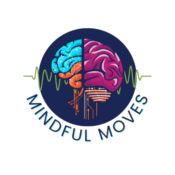I do not suffer from autism, but I do suffer from the way you treat me.
Tyler Durdin
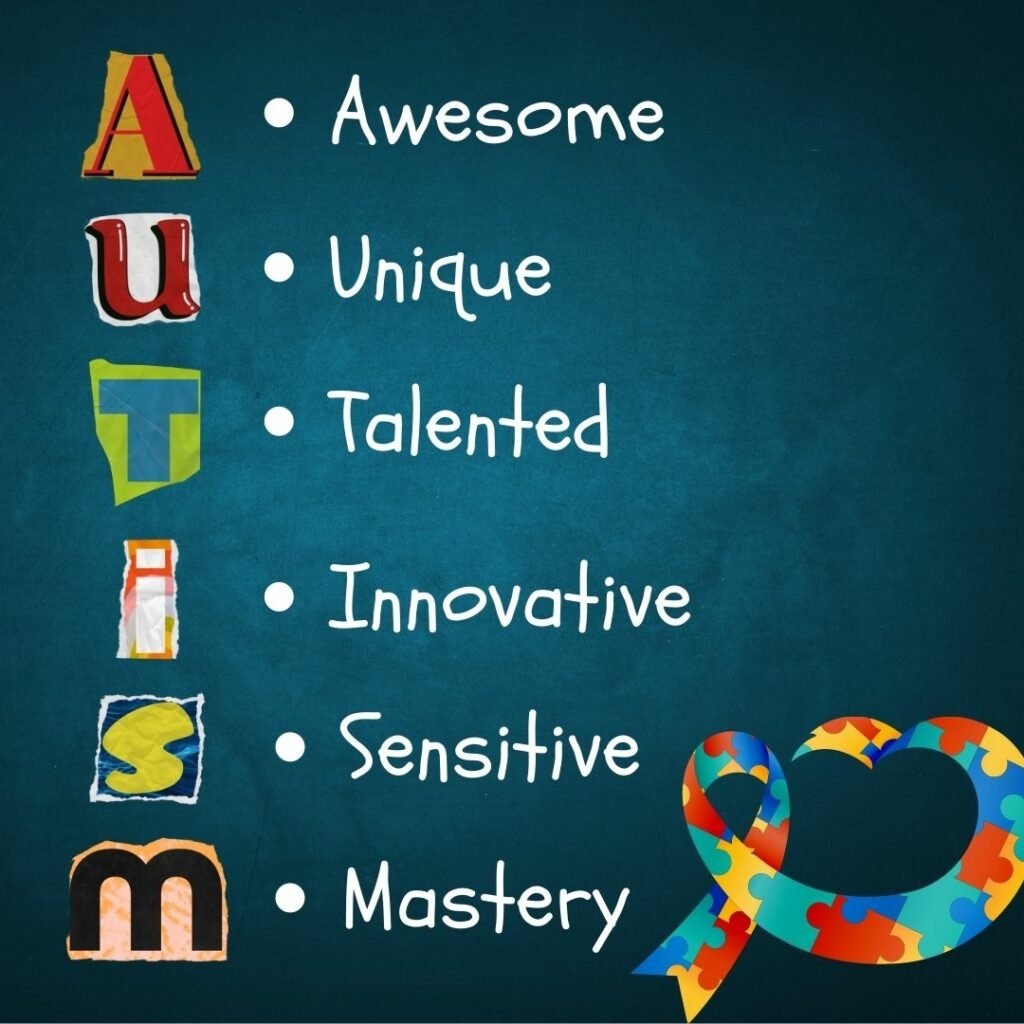
What is autism spectrum disorder (ASD)?
Autism is a behavioural defined disorder. Children with autism are referred to a A-typical and there are differences within the brain which makes them think and act differently to ‘neuro-typical’ people.
No one knows the exact cause of autism, however, there is a belief that a predisposition is triggered by environmental toxins. We have seen an increase of children on the spectrum, some experts saying as many as 1 in 36 children are now being diagnosed with ASD while many remain undiagnosed, struggling in the classroom and in life. Undiagnosed cases often involve children who would probably be classed as borderline and high functioning. This does not mean to say that they are not under immense pressure and operating with tremendous anxiety.
Some children mask the symptoms of ASD girls forming a large percentage of these children, and are often misdiagnosed, treated for anxiety and depression before a correct diagnosis is made. This often happens late into their teens, if ever.
The ‘label’ game.
In the past the difference in abilities within children on the spectrum were divided and labelled according to the different researchers. Classic or Kanner autism was named after Leo Kanner, (who emphasised the importance of autism as a developmental condition), and Asperger’s named after Hans Asperger (who described behaviours that seemed to resemble more of a personality disorder. He also noticed a link between children and fathers with similar problems.)
Autism has been seen to describe a person with defects regarding cognitive/intellectual and communication while those with Asperger’s do not. Of late is it best to refer children who fall on the spectrum, (whether showing mild or severe symptoms) as children with autism spectrum disorder (ASD).
Is there a cure?
Although there is no “cure”, that does not mean to say there is no treatment. People with ASD think very differently, and many will share that they see their autism as a gift, allowing them to see the world differently and think out of the box.
Because meeting one person on the spectrum, is just that, meeting a unique person with their own talents and challenges, treatments must be tailormade for the individual. These need to take into consideration the ‘splintered’ abilities we see in those with ASD. Some children will need greater support, while others will need compassion and understanding.
Symptoms of ASD.
While many think of the movie ” The Rain Man” with Dustin Hoffman as being the “picture” of autism, this is most definitely not the case. Many people on the spectrum have felt the need to defend themselves when remarks such as, “You don’t look autistic” have been made. Sadly, such statements prove society’s lack of understanding of autism.
Some people with autism may battle making eye contact, may repeat phrases or words, may stim or flap, and may seem abrupt or rude. Some might become overwhelmed and even rock to calm the overstimulated system, have routines and rituals that cannot be interrupted, it is most definitely not the case for all.
A lack of consistent and noticeable symptoms has led to many children left undiagnosed without the help they need. Many a time I have heard the phrase used by teachers, “there is something wrong, but I don’t know what”, again perhaps pointing to our lack of knowledge on the subject. Other times, I have had parents trying to convince me of their child’s unique intelligence, which they feel might go unnoticed being different to the type of intelligence in other children.
Signs of ASD.
For some children there is an absence for the need to engage from birth. These children do not babble, point or wave, or use gestures. In other children there is a regression from the age of eighteen months, and this has led to many answered questions. In such cases, parents liken the difference in their child’s behaviour to a switch going off. Children withdraw and words they knew are lost. Regression is one of the biggest red flags at this age. Children who once engaged and connected with others, avoid eye contact. Other behaviours include the ignoring of their name being called, anxiety and frustration resulting in head banging or other behaviours, toe-walking, flapping or other repetitive hand and foot movements, strange preoccupations with fans, wheels, switches etc, interested in looking at objects rather than people and preferring to play alone.
In terms of speak, one-year olds should be saying single words, two-year olds should be saying two-word sentences and from three years of age children should be using simple sentences that begin to become more complex. Children should play naturally and show interest in others, an awareness of pain and injury.
There are plenty questionnaires available on the internet if you are concerned about your child’s development.
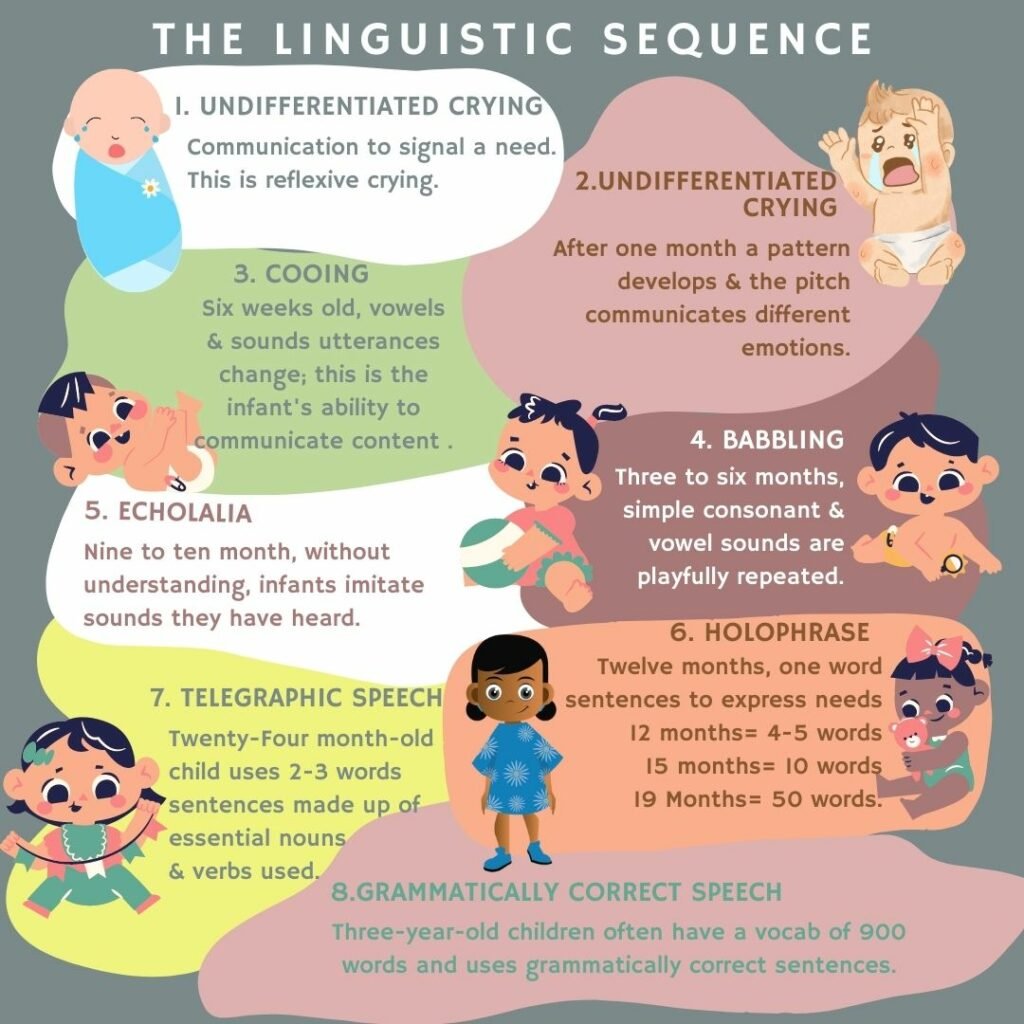
With such inconsistencies regarding symptoms and abilities, how are children diagnosed?
Although children with ASD will vary in their abilities, they all have challenges in four areas known as the quadrant. These areas include:
- Speech
- Sensory Processing
- Rigid thinking and play
- Social interaction
Who can diagnose autism?
In South Africa, autism is seen as a medical condition and will need a person with the relevant medical qualifications to diagnose it.
It is essential for parents, teachers, occupational therapists and the like to know the red flags and take note of these in order to report their findings to professionals.
Educational Kinesiologists have noticed a trend that may answer the reason as to why these children battle in the above areas.
Gestalt learning- Neurotypical.
Typically see children develop their gestalt brain first. This allows children to develop their understanding of the world and their part in it through connection and emotion. While a child engages, explores and makes senses of the world and people’s intentions they develop social skills and the understanding of non-verbal and verbal communication. Safety in relationship allows a child to step into the unknown with mom, dad or teacher besides them. The unknown is safe when a child can reach out for help and support. Learning is global as opposed to detailed and they can shift their attention to whatever is in front of them.
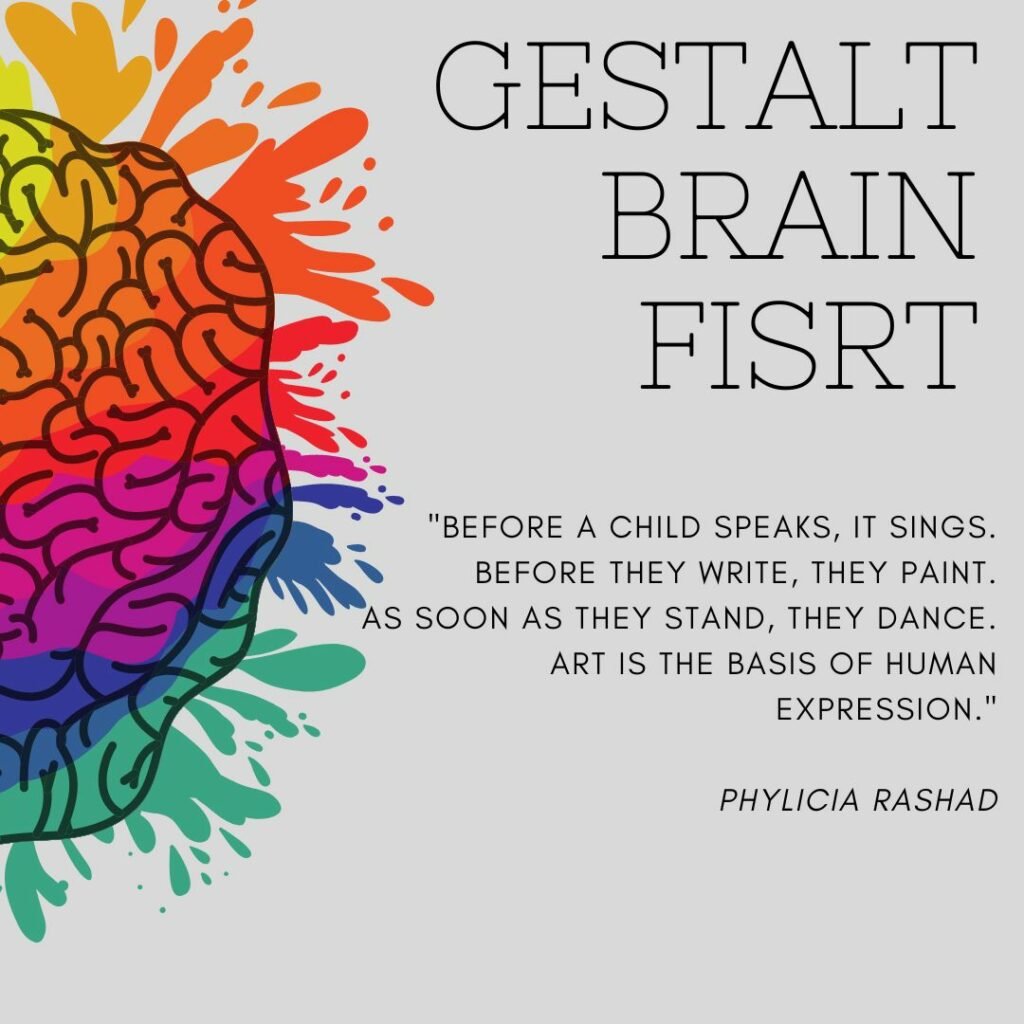
The Left-Brained child.
In our Optimal Brain Organisation work, when we come across a child younger than seven-years old who is left-brained dominant, it is seen as a red flag. Unable to diagnose, we will ask a parent to have such children assessed. The left brain tends to:
- See the “I” as opposed to the “we”.
- Sits to learn as opposed to moves to learn.
- Focuses on the details.
- Sees the difference.
- Enjoys structure and routine.
- Puts things in order/ sorts things.
- Sees things according the the rules and regulations.
- Looks that the facts.
One can understand the behaviours that present in the child when they withdraw rather than engage. They see only the facts assigning only literal meaning to themselves and the world around them. Games involve the sorting of toys into lines or according to specific details. Play is an action or process rather than a fluid game driven by imagination. Unable to connect, rituals become a safety net. When many of these children are overwhelmed interrupting such routines and rituals may result in a meltdown. Echolalia and stims or flapping, are also examples of such.
1. Speech Delays.
Some children with ASD are non-verbal, meaning that they do not speak. Others have speech delays while others still have accents or speak with a strange tone, or rhythm. Many children with ASD have a very literal way of explaining the abstract and often choose words or phrases that do not match the situation or the audience.
Because communication is based on the understanding of our audience and the relationship we have with our audience, neurotypical children learn the tricks. They can adjust their behaviour and verbal response according to the cues they pick up during a conversation. Reading gestures, body language and taking note of the tone of voice, means that such a child can pick up when someone is being deceitful. These skills allow children to read between the lines, infer, put themselves in someone else’s shoes and more. Communication helps a person understand and fit into society.
Children on the spectrum are at a disadvantage with regards to language and often misinterpret what is being asked of them. They miss the cues that would allow them to adjust their behaviour and response.
In the classroom they are often discriminated against when teachers mark according to rigid memos or when questions are vague. They may battle with case studies, comprehensions, fables, poetry, sayings, metaphors and more. Such children easily lose marks in systems that don’t allow for half marks. They often know when something is right, but battle to pick up on the answer the teacher believes to be “more right” than others. Story sums may also present challenges where the question is based on the understanding of language.
For this reason, teachers who are not language teachers should consider their questioning and marking style so as not to penalize such learners. In these subjects one should ask whether the concept is being assessed or if the child’s ability to understand language and spelling is most important. Schools that do not take this into consideration, penalise these children not only in language subjects and Life Orientation, (which will naturally struggle with), but across other learning areas as well! Such systems fail in showing these children where their true strengths lie.
Listening comprehensions also prove difficult however, this is often due to auditory processing issues as a result of active primitive reflexes. They are further at a disadvantage when they choose not to respond or engage which affects their ability to take in information and learn. Anxiety, elective mutism, the tendency to withdraw, pronunciation, poor fine motor skills, letter reversals and more, are some of the symptoms of active primitive reflexes.
2. Sensory Processing.
The second area involves sensory processing and children with ASD will seek certain sensory input and avoid others. We often see these present in children who;
- Suffer from fear and anxiety.
- Dislike being touched.
- Hate labels, socks or certain clothes.
- Walk on their toes.
- Drool a lot.
- Wet their bed especially after the age of five-years old.
- Cover their ears.
- Shout louder than the noise around.
- Bang and crash.
- Are clumsy.
- Battle to follow instructions.
- Are Aggressive and act out.
- Talk back.
- Are defiant or manipulative.
- Avoid eye contact.
- Withdraw.
- Have poor concentration.
- Have low muscle tone.
- Have fine motor issues… and much more.
Sensory issues are often the reason behind the meltdowns which must not be confused with a tantrum. Meltdowns require calming the system which is overwhelmed and needs for a person to intervene, by reducing the sensory input. On the other hand, when behaviours are sensory seeking, it is important to assist a child in getting the input they require to self-regulate in an appropriate manner.
When these children seek certain sensory input but do not have the social skills to understand what is appropriate, it can lead to some rather disturbing behaviours.
Children on the spectrum often reach mental fatigue quickly as they have so much to process and are often unable to filter out irrelevant sensory stimuli. Teachers and parents must be sensitive to this and allow for movement breaks or times of rest.
When children have auditory processing issues along with the above language challenges, they are often accused of not listening in the classroom or not following instructions.
Teachers and parents need to sharpen their noticing skills. Being aware of a child becoming agitated allows one to step in and defuse the situation before a child has a meltdown. Knowledge empowers teachers and parents and when a person understands the reason behind the behaviour, they can intervene in a meaningful manner. Knowing that the above are symptoms of active primitive reflexes allows a teacher or parent to implement a daily movement program that will calm the child down and in time, will integrate the active reflexes responsible for the undesired behaviour.
I highly recommend that teachers and parents enrol in courses that teach this information. If you are not sure of what course to enrol in, contact us and we’ll direct you.
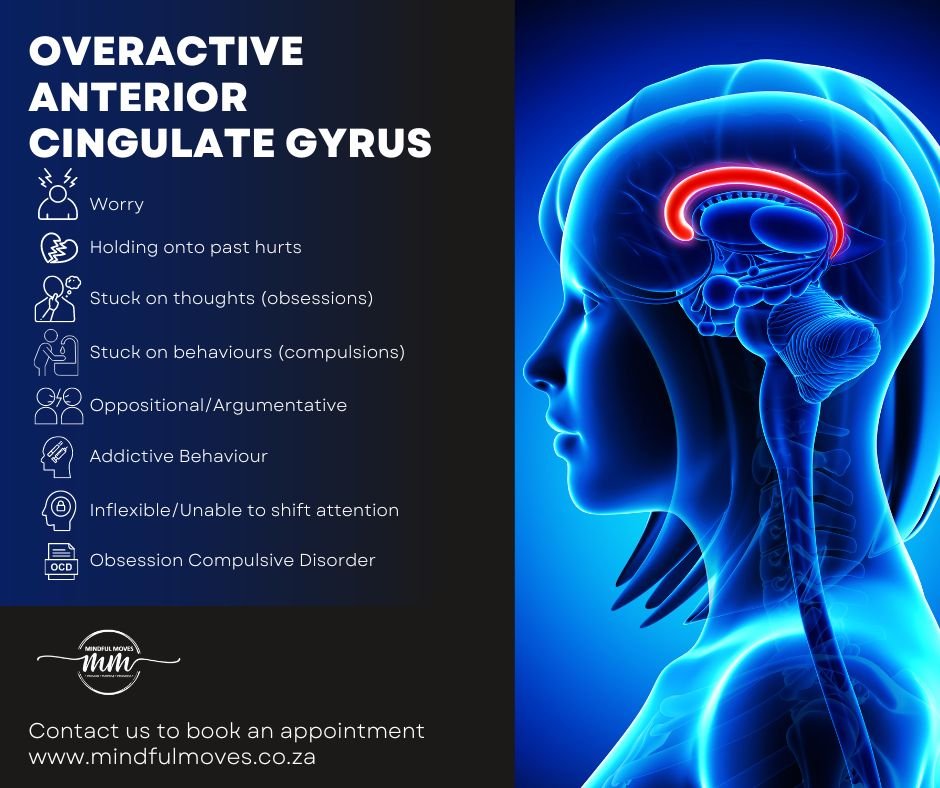
3.Rigid Thinking.
According to Dr Daniel Amen, many children with ASD have a lot of activity taking place in the front of the brain and are found to have less activity in the cerebellum. This is very different from the classic ADD/ADHD brain where activity drops in the front part of the brain when trying to concentrate. While the behaviours and concentration of children with ASD and ADD/ADHD seem similar, I believe it is due to the active primitive reflexes.
An overactive anterior cingulate gyrus might mean:
- The inability to shift attention.
- Rigid thinking.
- Inability to see options.
- Inability to co-operate.
- Holding on to past hurts.
- Getting stuck on thoughts and behaviours.
- Oppositional behaviour.
- Obsessive compulsive disorder.
- Argumentativeness.
Many children with ASD will latch on to something they find interesting. They tend to learn all the facts and can share them verbatim with others. Their interest in a subject and tenacity can lead to them becoming “experts” in field. They may get stuck on such interests and battle to move on.
Routine and rituals also create a way of bringing the predictable into the unknown. Repetitive movement, or echolalia are often coping mechanisms, and such behaviours may increase when stress levels rise.
The cerebellum is an interesting part of the brain with most connects. This part of the brain is responsible for movement and as mentioned above, often has been found to have less brain activity in children with ASD (this is according to Dr Daniel Amen’s findings having used SPECT scans on over a thousand children with ASD).
Movement is so important for children with ASD. When introduction rhythmically, and daily in routine, it not only offers the child a meaningful way to move but uses what they naturally seek to calm the system. Midline movements have also proven highly beneficial working with the cerebellum to increase brain activity.
4. Social Interaction.
By now I trust you are beginning to see how the active reflexes and logical young child lead to social issues. Social skills again are not developed as they should be by the child who thinks more literally than creatively. Furthermore, active primitive reflexes result in some of the behaviours we see that have an impact on a child’s ability to connect.
For such children social interactions need to be turned into a science. Children with ASD often need to be taught the structure of a conversation, or the science behind writing an essay. When people “break these rules”, they can be caught off guard. Some people with ASD learn the to read body language and become very good at implementing this knowledge which comes naturally for other people.
Many people with ASD battle with conversations, once they feel they can contribute and their area of interest is brought up, they may share all the facts. They often miss the signs of boredom, or the cues to give the other person a chance to speak and they motor on, driven by the need to get to the end of the list of facts. This makes conversation difficult, as most conversation is not so much about what is said, but the relationship between the two speakers. Social interactions require sugar coating, white lies and holding back on certain information. Many people with ASD are accused of being rude and abrupt. They say things as they see them. This can lead to being excluded or labelled as “weird”. These people are often left feeling hurt as so many of them wear their heart on their sleeves and crave connection and a sense of belonging.
I do not need a diagnosis to support a child.
As lay people our job is not to diagnose, but rather to create a classroom or home that is inclusive of those potentially with ASD. Knowing your learners is a great way to notice each child’s different behaviours and if they change suddenly. Take note of behaviours and reach out to us or others if you are not sure of what you have noticed. As an Educational Kinesiologist, I cannot diagnose however, I can advise on possible active reflexes and the brain organisation. This will allow you as a teacher or parent to make changes and notice if they are supporting the child.
Enrolling in these courses, will mean that you too will have such information at hand so that you can already make a difference while awaiting a diagnosis.
Learn about Brain Organisation.
One such course Optimal Brain Organisation, is a great course for parents and teachers. Having this knowledge means one can quickly see the way in which children think and what skills need teaching and developing. Such a course equips both teachers and parents with tools to use in the classroom and at home.
Learn about Active Primitive Reflexes.
Find out about courses on reflexes. Alternatively book an appointment or seek the consult of an Educational Kinesiologist with reflex training. Mindful Moves offers profiling sessions to individuals and consults with teachers so that movement programs can be put into place. The less active cerebellum of the child with ASD needs bilateral movement to active it. Mindful Moves delivers courses to teachers and schools so that they may use designed moves to work quickly in a classroom, considering the lack of space and limited time.
Integrating reflexes will result in less meltdowns and behaviours as the child is better able to take in and process sensory input.
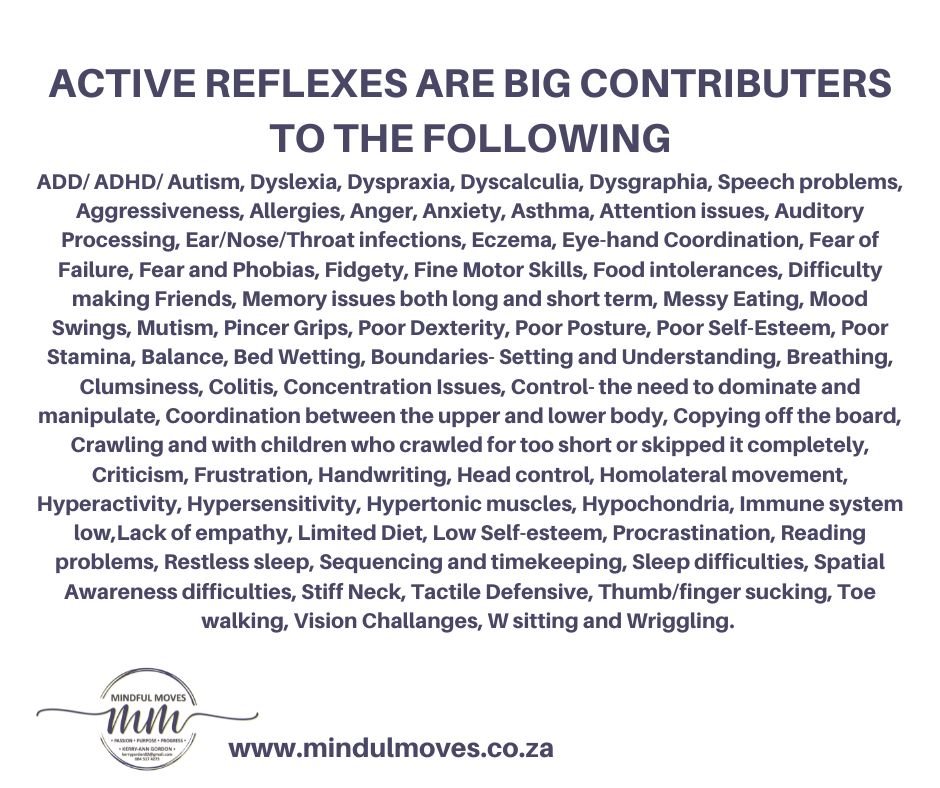
Nutrition and Supplements.
Find out about supplements and diets that assist the child and promote brain health. Many children with ASD have high levels of metals and inflammation in the body and there are supplements to assist with these. It is always great to get in touch with a nutritionist or homeopath. Some children do not eat enough due to active oral reflexes and food sensitivities. A nutritionist or homeopath will ensure that your child is getting adequate vitamins and minerals in to support growth and brain development.
Therapists.
When you have a child with ASD the saying that it takes a village to raise a child, is very true, but your village may consist of therapists. With regards to the quadrant, you might need the following:
- Speech- Educational Kinesiologist/Speech therapist and Audiologist
- Sensory Processing- Educational Kinesiologist/Occupational Therapist who is SI trained
- Rigid Thinking – Educational Kinesiologist/Nutritionist/Homeopath/Neurofeedback/Psychologist
- Social Skills- Educational Kinesiologist/Psychologist
There remain many alternative therapies that work very well and parents have seen great improvements with:
- Neurofeedback
- Aromatherapy
- Chiropractors
- Reflexology
- Body Talk
- Music/ Sound Therapy… and others
If you need help in your home or classroom…
Contact us if you need help in your classroom or home. With each child being so different it is very important to map their talents, gifts and areas of challenge so that interventions can be tailormade for them. The best is to book an appointment where we can go through all your questions and put together a plan for your school or home.
Other than that, we offer many SACE accredited courses so that you can equip yourself or your staff to support these children in order for them to go on to reach their full potential!
www.mindulmoves.co.za/ info@mindfulmoves.co.za
